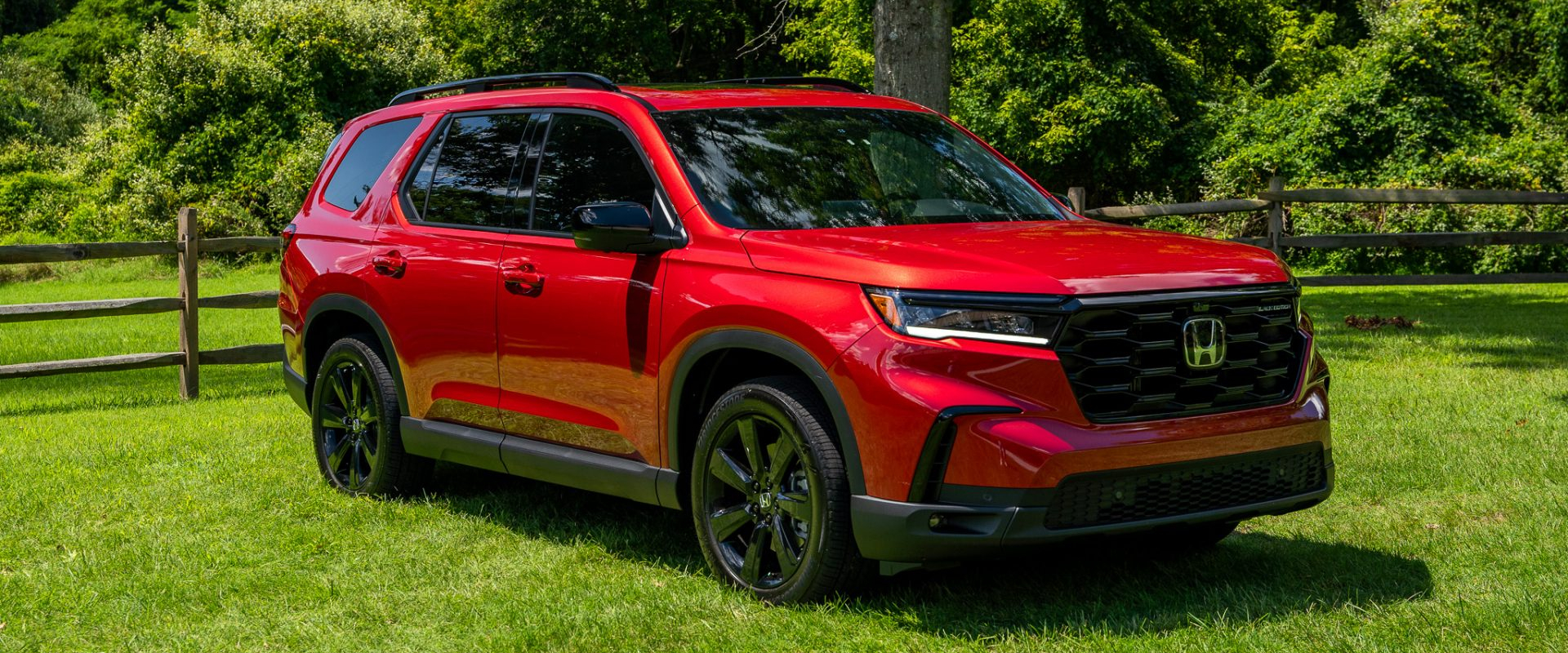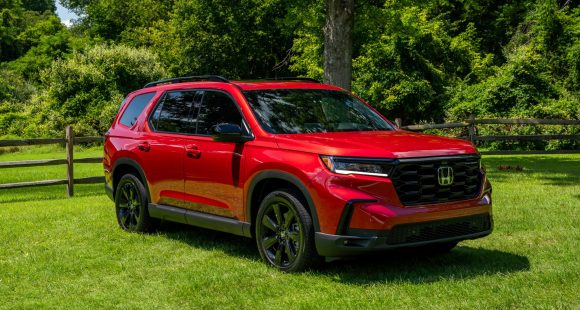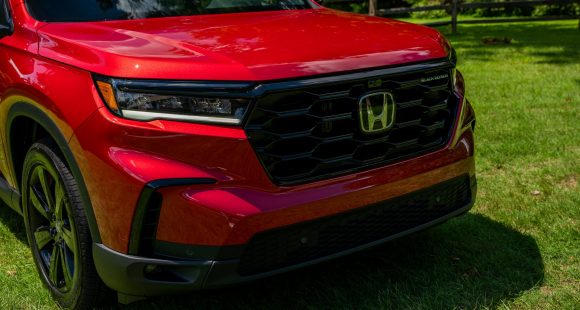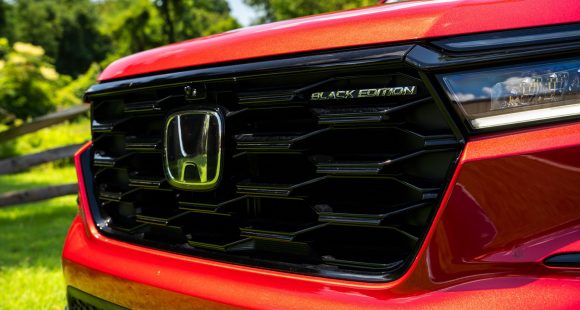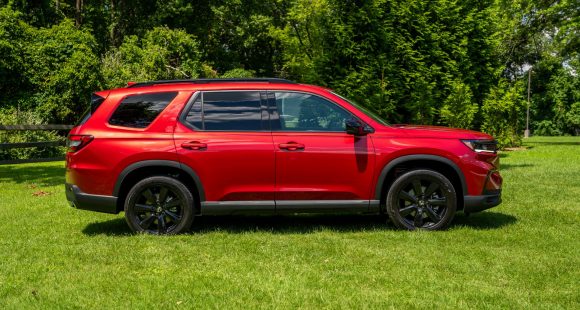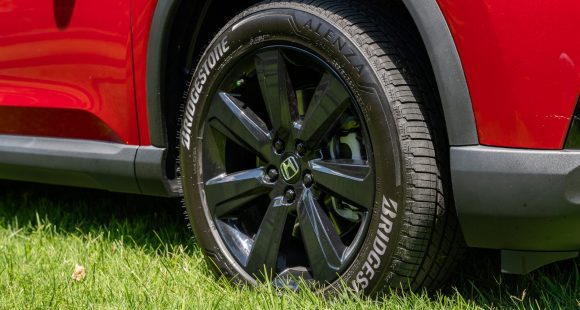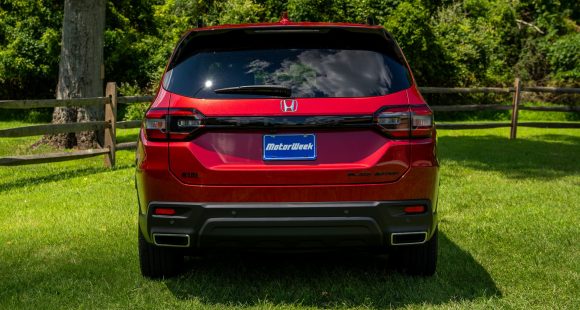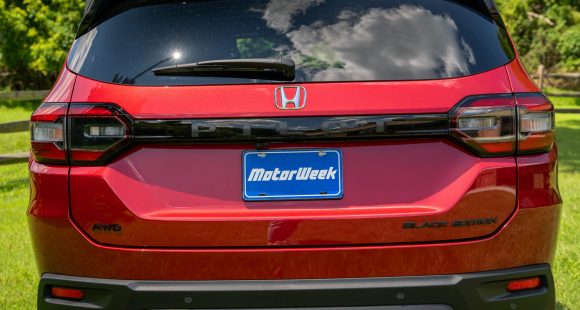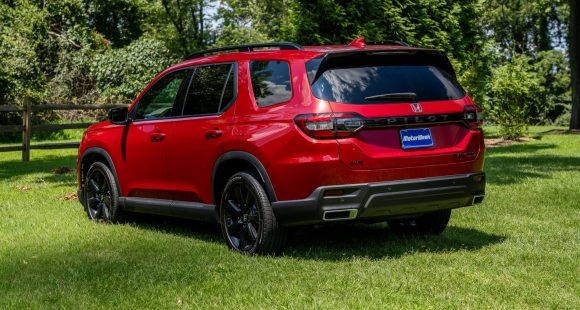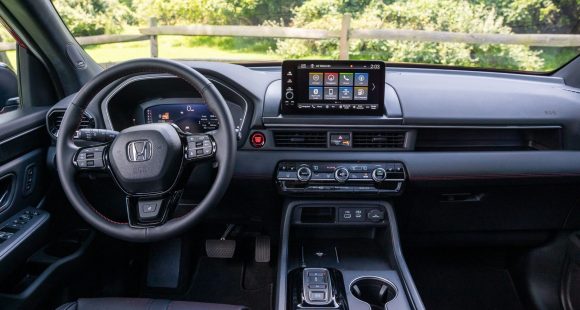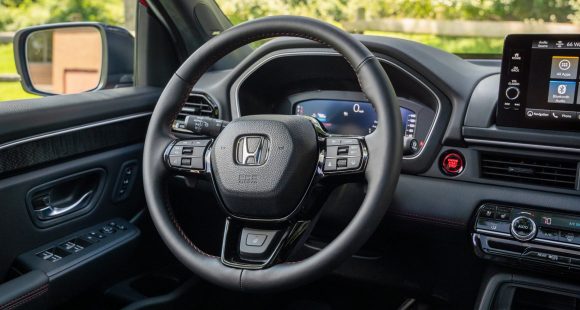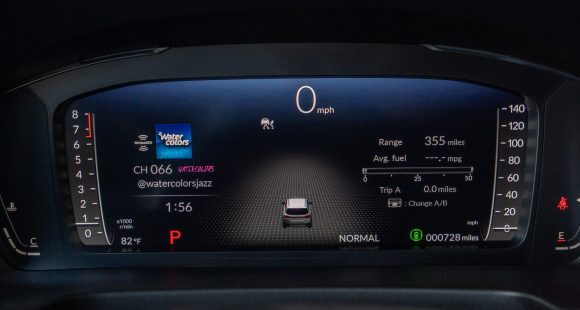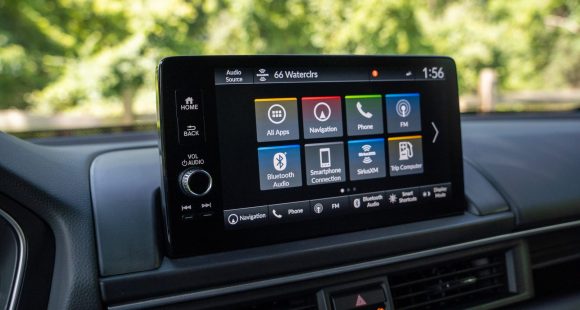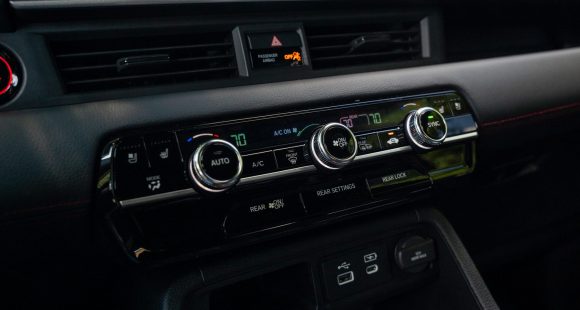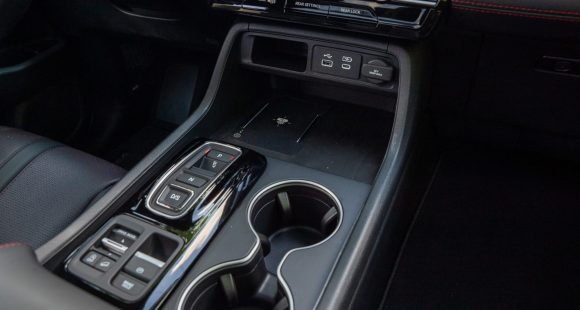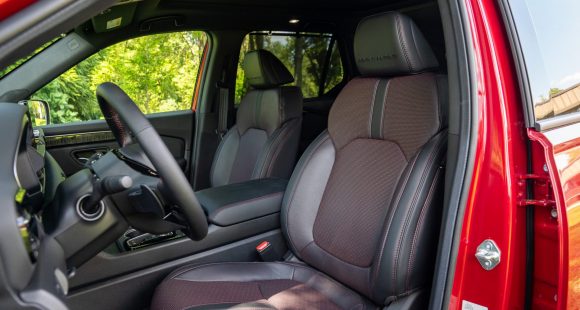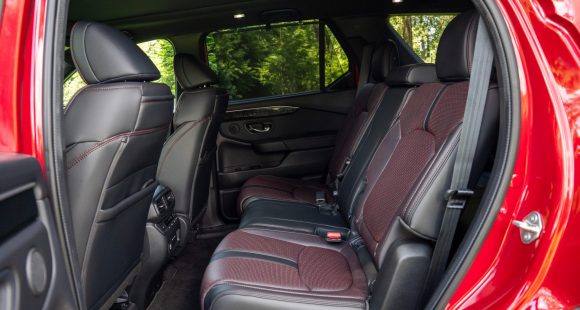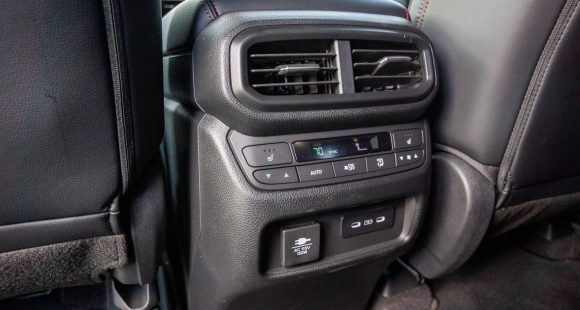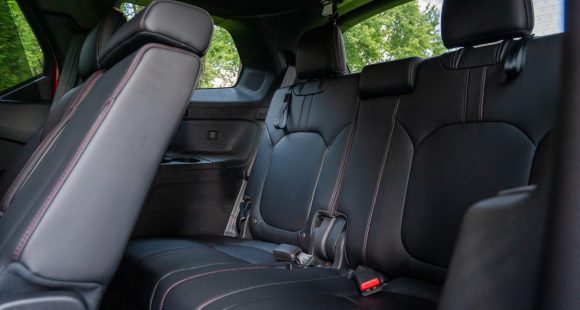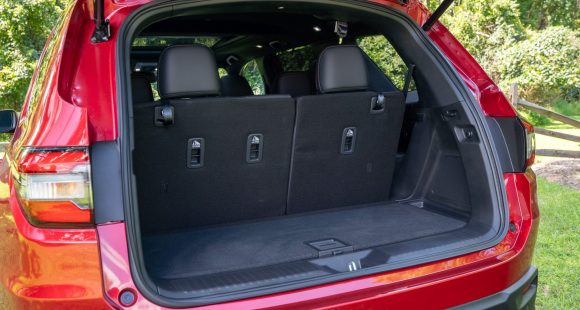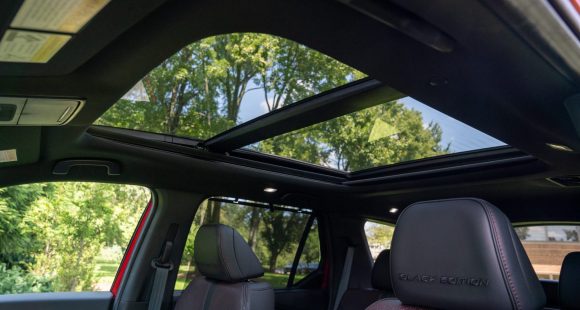2015 Ford Mustang
50 years have passed since the Ford Mustang entered the corral, creating the iconic pony car segment. While a lot has changed since then, the Mustang really hasn’t changed that much at all. But as Ford launches the all-new, 2015, 6th generation Mustang, it does so with some of the biggest changes ever. So, saddle up, as the legend of Mustang continues anew.
The 2015 Ford Mustang is arriving at just the right time. Car sales are back up to pre-recession levels, and the original pony car has been facing some the toughest competition ever from the re-launched Chevrolet Camaro and Dodge Challenger. In addition to that, this will be the first Mustang with true international sales intentions.
Powering this mission are three engines, each with more than 300-horsepower. The 5.0-liter V8 is back of course, now with more muscle…435–horsepower…thanks to tweaked cylinder heads and intake. The 3.7-liter V6 also returns; with its intake redesigned, due to a lower hood. It results in a loss of horsepower, now at 300 even.
Between the two, at 310–horsepower, is a new 2.3-liter EcoBoost turbo I4 with 320 lb-ft. of torque. It’s not the first turbo-4 under a Mustang hood, that would be the SVO of ’84 to ’86, but it is the first Ford to use a twin-scroll unit.
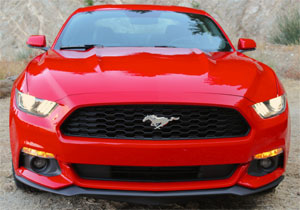 Transmissions hang with tradition, a 6-speed manual or 6-speed automatic for all engines.
Transmissions hang with tradition, a 6-speed manual or 6-speed automatic for all engines.
Styling, always a Mustang fan hot button, is less altered than originally feared. Retro-reinvented, the Mustang 6.0 is lower, wider, and even with a familiar long hood profile, far more aggressive. Wheelbase stays at 107.1-inches and overall length is shortened by 2/10ths of an inch.
The blunt nose and hallmark grille opening are tweaked to fit the rest of the Ford brand. There’s new HID headlights, and a fresh take on LED signature lighting.
There’s clearly more of a fastback shape towards the backend, and the new rear fascia is “euro diffuser” in design. The glossy tail light panel features updated horses for 4 & 6 cylinders, and a GT badge for V8s. The 3-bar tail lights return, but look more 3-dimensional. Turn signals are still sequential.
17-inch wheels are standard, GTs get 18’s; 19’s are optional on any. Brembo brakes come with GT or EcoBoost Performance Packages.
A classic appearance continues inside too, with the dual hump dash. But, gauges, the center stack, and electronic aids are much more in the now. You’ll also find better materials, more knee space thanks to a slimmer lower dash, a passenger’s side knee airbag, and there’s even more room in the glove box.
Toggle switches and a start button are brought into the mix, and cup holders have been shifted over providing freer access to the shifter. Even base models get keyless entry and a back-up camera.
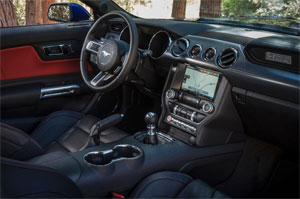 Selectable drive modes are new, adjusting steering effort, engine and transmission response, as well as stability control intervention for normal, snow/wet, sport, and track conditions. And of course there are track apps, accessible through the gauge panel information screen, as is Launch Control.
Selectable drive modes are new, adjusting steering effort, engine and transmission response, as well as stability control intervention for normal, snow/wet, sport, and track conditions. And of course there are track apps, accessible through the gauge panel information screen, as is Launch Control.
The steering wheel is smaller in diameter, but gets lots of new switchgear added to it. The trunk opening is larger, and the amount of space behind it has grown a tiny bit, now at 13.5 cubic-ft.
Nostalgia aside, we found the new-gen ‘stang is now much more about driving with the much anticipated independent rear suspension now standard on all models. You don’t really notice it in sedate daily driving, however. But, dive deep into a corner, start feeding in some power, and the car hunkers down, propelling you out like never before.
Should you encounter a bump mid-way through that corner, it becomes even more obvious; as the rear end is a whole lot less busy, happy to follow in line instead of trying to overtake you every chance it gets. Such a big change out back forced Ford to extensively rework the front suspension as well. That’s a win-win too.
As for how the Mustang feels with 4-cylinder power: it feels just fine. There’s good response, great mid-range torque, and even some respectable sound, though not at full song.
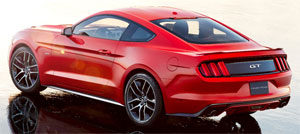 Nothing sounds like a V8 of course and the GT is still where it’s at if you’re looking for Mustang bragging rights. Manual 0 to 60 nudges four and a half seconds. Drag racers, or the burnout challenged, will also be happy to hear that all GT’s come standard with a line lock.
Nothing sounds like a V8 of course and the GT is still where it’s at if you’re looking for Mustang bragging rights. Manual 0 to 60 nudges four and a half seconds. Drag racers, or the burnout challenged, will also be happy to hear that all GT’s come standard with a line lock.
Mustang base prices are up slightly; $24,425 for the V6. That’s still less than a base Camaro or Challenger. EcoBoost I4 is just above that at $25,995, while V8 GTs start at $32,925.
We think the 2015 Ford Mustang, while a little less nostalgic, is much farther reaching, even without its international sales intentions. It is clearly a much better sporty coupe than ever before, and not just in the margins. And that progression will ensure that the Mustang legend will not only live on, but continue to lead.
Specifications
- Engine: 5.0 liter V8 / 3.7 liter V6 / 2.3 liter
- Horsepower: 435 / 300 / 310
- Torque: 400 lb-ft./ --- / 320 lb-ft.
2024 Toyota Land Cruiser
Toyota’s Go Anywhere Globetrotter Returns To U.S.
Every once in a while, we all need a reset. A time to get back to basics and prioritize the things that really matter. Well, for the Toyota Land Cruiser that time is now. So, let’s find out if that means bigger and better things for Toyota’s iconic off-roader.
The Toyota Land Cruiser’s status among the global off-road community is legendary, and it’s hard to imagine there’s any corner of the earth where a Land Cruiser hasn’t kicked up a little dust or mud. Well, 2024 sees the return of the Land Cruiser to the U.S. market after a 3-year hiatus, getting a major reset for the journey.
The reset comes mostly by no longer being based on the large three-row “300-series” chassis, but a new version of the smaller “200-series,” now known as the J250. As with the latest Tacoma, it uses the Tundra pickup’s full-size steel frame.
While the main Land Cruiser model, which goes by simply Land Cruiser, is packed full of luxury and convenience features, there is also a stripped-down model known as the 1958, honoring the first year the Land Cruiser made landfall here in North America. And it is that 1958 we have here, and we were glad to see it, as it also celebrates the original’s back-to-basics approach as a blank canvas for you to personalize as you tackle more and more adventures.
Not that it’s fully stripped down, as 8-inch touchscreen infotainment, a 7-inch full-color multi-information display, and automatic climate control are still standard. Plus, some seriously durable materials, and great heated cloth front seats that throw off some get serious 1990s Tacoma vibes.
But outside, there’s a definite lack of flashy trim and basic looking 18-inch wheels with Yokohama Geolander all-season tires; plus, big chunky bumpers and tilt-up back glass, which is a rarity that we appreciate. Though there is a little too much plastic in places that are sure to see some abuse if you do any significant off-roading.
It even feels a little rough around the edges, but for us it just adds to the rugged old-school utility vibe in a good way.
We did just that, both here in the Mid-Atlantic as well as in the California desert; and while there are some tech-forward driving aids, the actual hardware is in most cases plenty to get things done. That includes standard full-time dual-range four-wheel-drive, locking center and rear diffs, and 8.7-inches of ground clearance. A front stabilizer bar disconnect is also available to allow for increased articulation.
Who needs a V6 or even a V8 when you’ve got Toyota’s i-FORCE MAX setup at your disposal with 326 horsepower and 465 lb-ft of torque coming from a 2.4-liter turbo-four with an electric motor sandwiched between the engine and its eight-speed automatic transmission. Low speed torque delivery is impressive. It even feels a little rough around the edges, which may be a turn off to some, but for us it just adds to the rugged old-school utility vibe in a good way.
And it certainly feels quicker than an off roader needs to be, with an instant torque dump as soon as we eased on the throttle at our Mason Dixon test track; helping us get to 60 in 8.1 seconds and through the quarter-mile in 16.3 seconds at 86 mph. Considering the Land Cruiser’s terrain conquering mission, it behaved quite well in our handling course; it was plenty responsive to inputs, with less body roll than we expected and plenty of grip from the tires. The steering was light and quick but as expected didn’t provide much feel. Other than significant nosedive, braking performance was exceptional. Only 107-feet to panic stop us from 60 mph.
With the shift to the smaller size, there’s no more third row available, and cargo capacity now comes in at 46.2 cubic-feet with a max of a still healthy 82.1. Now, the best part of the Land Cruiser’s return is the entry price of $57,445. That’s about 30-grand less than what the last Land Cruiser went for back in 2021.
Whether it’s over the top fashion trends, mullets, or zombies; just when you think they’re dead, they come roaring back to life. Of course, we’re much happier to see the resurrection of this 2024 Toyota Land Cruiser than any of those things. Toyota is one brand that still recognizes the value of full-framed rugged rigs and has also acknowledged that sometimes less really is more. The Godfather of Toyota off-roading is back and better than ever.
2025 Honda Pilot Black Edition
Honda’s Most Elite Pilot Gets More Elite
Honda began their Pilot crossover program back in 2003, and it didn’t take long to see that this three-row ute was ready for prime time. Now in its 4th-generation, Honda has created the most off-road capable Pilot yet, but this year, they focus on another set of enthusiasts. Time for us to shine a line on this new Black Edition.
Honda has certainly been an elite performer in the SUV world since their CR-V first hit the pavement in the late 1990s. So much so, they’ve been using the term “elite” to mark their top trim level for years now.
Well, things rarely stay the same for too long in the car marketing world. Combine that with buyers willing to pay more and more for added bling, and there’s a new king of the Honda hill; Black Edition. Seen here on this 2025 Honda Pilot Black Edition.
Now the 4th generation Pilot was all-new for 2023, and after our test of the new off-road inspired TrailSport version, we were eager to get a taste of the finer things of Honda life. Now the Black Edition doesn’t so much add features, as ratchet up the Pilot’s style game with 20-inch gloss-black wheels and unique trim inside and out.
For the exterior, that also means glossy dark treatments applied to the grille, side mirrors, window trim, air intakes in the front fascia, and rear bumper; plus, unique logos of course.
Inside, exclusive red accent stitching is applied to the seats, steering wheel, and door panels; plus, red accent lighting and Black Edition logos.
Like every Pilot, 3-row seating is standard. But, while both 1st and 2nd rows are very spacious, that 3rd row is best suited for kids, and the 1-touch access is about as easy as it gets.
Storage space is great too, and with multiple folding options for the 2nd row, it offers a lot of flexibility and a nice flat floor when everything’s folded. There’s 18.6 cubic-ft. of room behind the 3rd row, 48.5 behind the 2nd, and a giant 86.5 with all seatbacks folded.
Front seating is as comfortable as it is spacious, and while the Pilot’s 9-inch touchscreen is relatively small by the latest standards, it, as well as the rest of the controls, are simple and straightforward to operate.
Storage space is great too, and with multiple folding options for the 2nd row, it offers a lot of flexibility.
Producing the Pilot’s get-up-and-go is Honda’s familiar naturally aspirated 3.5-liter V6, outputting 285-horsepower and 262 lb-ft. of torque. It flows through a 10-speed automatic transmission to the front wheels. All-wheel-drive with Intelligent Variable Torque Management is available in Sport, EX-L, and Touring trims. It’s standard for TrailSport, Elite, and of course, Black Edition.
Power felt more than adequate on the street. But what about at our Mason Dixon test track?
Here too power felt strong off the line. But, our computer showed it tempered quickly, taking a longish 8.2-seconds to reach 60. That’s also quite a bit off the pace of the 6.8-seconds we saw in the TrailSport two years ago. Gear changes in the 10-speed automatic were very smooth, but also a little slow, as we worked our way to the end of the ¼-mile in 15.9-seconds at 90 miles-per-hour.
Minimal body roll and a moderate amount of understeer set the tone in our handling course, where this Pilot felt well planted and easy to control, with very little stability system intervention, even as we carried fairly high speeds through the cones.
Panic stops from 60 averaged a good 115-feet. There was a fair amount of nosedive, but results were quite consistent thanks to minimal fade.
So, despite a somewhat slow roll out, we were pleased with the Pilot’s overall very competent and safe track performance.
Back to the street, Government Fuel Economy Ratings, with all-wheel-drive are 19-City, 25-Highway, and 21-Combined; we averaged a good 24.2 miles-per-gallon of Regular.
The Energy Impact Score is slightly below average, using 14.2-barrels of oil annually, with CO2 emissions of 7.0-tons.
With a new top end trim level, Honda also eliminated one at the bottom; no more LX. Sport is now the base model starting at $41,595, with all-wheel-drive a $2,100 option. Top Black Edition starts at $55,975.
The Honda Pilot has been a leader in the 3-row SUV segment ever since it arrived on the scene for 2003, delivering capability, reliability, and driving dynamics well above its class norm. So, after focusing on off-road ruggedness in recent years, the 2025 Honda Pilot Black Edition adds a welcomed bit of black-tie flair to the Honda SUV party.
Specifications
As Tested
- Engine: 3.5-liter V6
- Transmission: 10-speed automatic
- Horsepower: 285
- Torque: 262 lb-ft.
- EPA: 19 City | 25 Highway | 21 Combined
- 0-60 mph: 8.2 seconds
- 1/4 Mile: 15.9 seconds at 90 mph
- Braking, 60-0 (avg): 115 feet
- MW Fuel Economy: 24.2 MPG (Regular)








